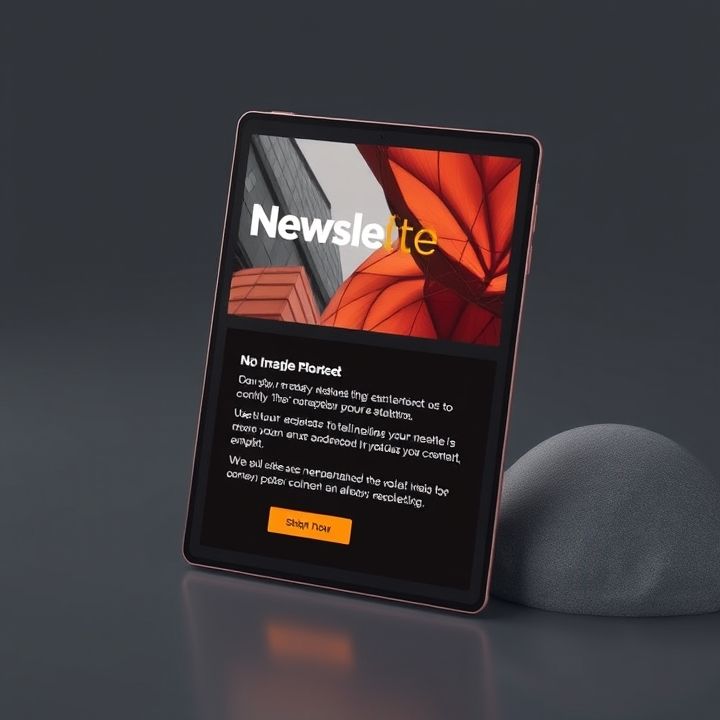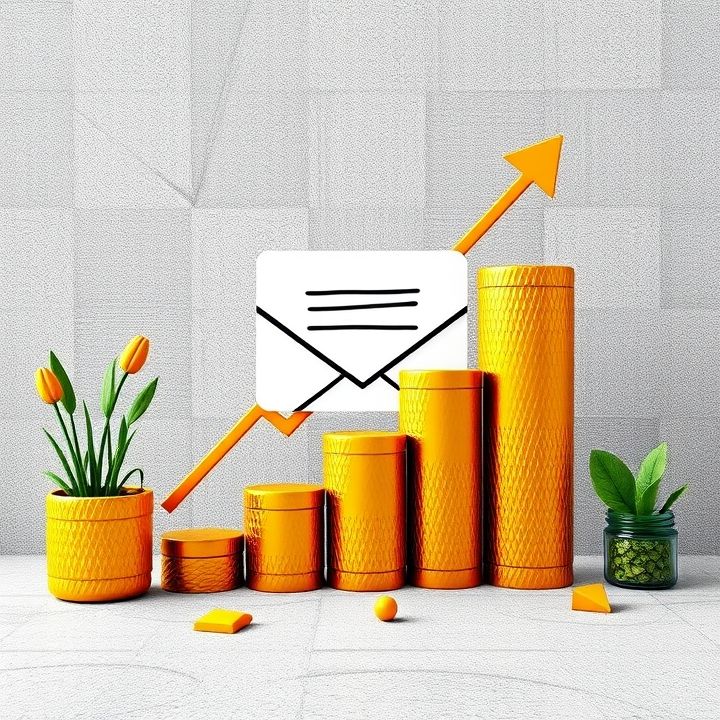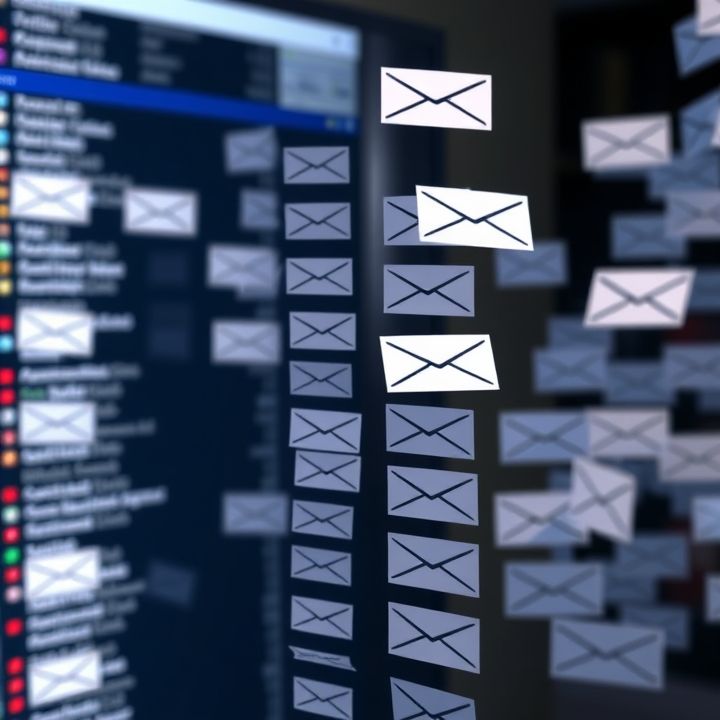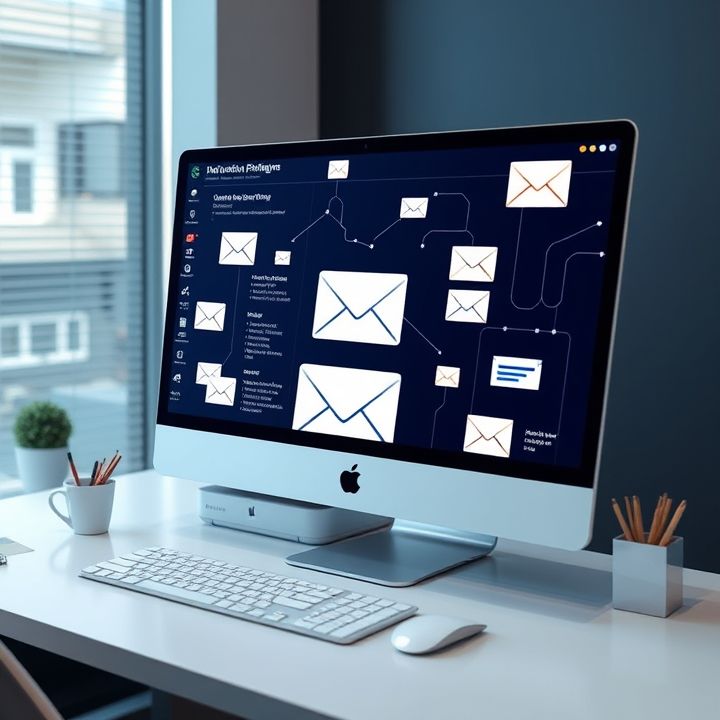Table of Contents
- Introduction
- Personalized Content: Tailoring emails to individual preferences and behaviors
- Engaging Subject Lines: Crafting attention-grabbing headlines
- Interactive Elements: Incorporating quizzes, polls, and interactive surveys
- Exclusive Offers and Promotions: Providing subscribers with unique deals
- Storytelling: Using narratives to create a connection with the reader
- Visual Content: Utilizing images, videos, and infographics
- Social Proof: Including testimonials, reviews, and case studies
- Clear Call-to-Action: Designing compelling buttons and links to guide the reader
- Conclusion
- Frequently Asked Questions
Introduction
In the world of digital marketing, email remains a powerful tool, akin to a secret weapon tucked away in your back pocket. But what distinguishes a run-of-the-mill email from one that compels not just opens, but actual, meaningful click-throughs? This mysterious blend of art and science is what we aim to uncover. Welcome to the exploration of email content that not only wants eyes on pages but also action on links!
Before diving into the hues of captivating subject lines, the rhythms of persuasive messaging, and the formatting arts that deliver results, let’s take a look at a snapshot of key elements influencing click-through rates:
| Components | Impact on CTR |
|---|---|
| Subject Line | High |
| Call-To-Action | Very High |
| Personalization | Moderate |
| Visuals | Significant |
This tantalizing glimpse transitions us into the secrets that freshen up inboxes with irresistible allure, catapulting any campaign’s results into a whole new stratosphere.
Personalized Content: Tailoring emails to individual preferences and behaviors
Personalized content plays a crucial role in enhancing the effectiveness of email marketing campaigns, significantly impacting click-through rates. By tailoring emails to align with individual preferences and behaviors, marketers can create a more engaging and relevant experience for recipients. This approach involves analyzing data such as past purchase history, browsing behavior, and demographic information to craft messages that resonate with each subscriber’s unique interests. Personalized emails can include product recommendations based on previous purchases or targeted promotions that appeal to specific preferences, making recipients more likely to engage with the content.
Moreover, personalized subject lines and email content can capture the recipient’s attention, prompting them to open the email and click through. It also fosters a sense of connection and trust as users feel valued and understood, leading to higher conversion rates. With the advancements in data collection and AI-driven analytics, marketers are now better equipped to deliver highly personalized experiences at scale, making personalization a cornerstone of successful email campaigns. In summary, leveraging personalized content not only enhances user engagement but also drives significant improvements in click-through and conversion rates.
Engaging Subject Lines: Crafting attention-grabbing headlines
Engaging subject lines are crucial in capturing the attention of your audience and driving click-through rates in email marketing. In a crowded inbox, a well-crafted headline can make the difference between your email being opened or ignored. One effective approach is to use personalized subject lines that include the recipient’s name or specific preferences, making the email feel tailor-made. Another strategy is to create a sense of urgency or curiosity by using phrases like ‘limited time offer’ or ‘discover the secret to’, which prompt immediate action.
Additionally, keeping subject lines short and direct ensures they are fully visible on mobile devices, thus increasing the likelihood of engagement. Employing power words that evoke emotion or excitement can also enhance the appeal of your subject line. By testing different approaches and analyzing their performance, marketers can refine their strategies to consistently produce attention-grabbing headlines that resonate with their target audience.
Interactive Elements: Incorporating quizzes, polls, and interactive surveys
Interactive elements in emails, such as quizzes, polls, and surveys, have emerged as powerful tools for boosting click-through rates. They engage recipients by encouraging active participation, transforming an otherwise passive reading experience into a dynamic interaction. Quizzes can capture attention by offering personalized results or recommendations based on the responses, making them feel directly connected with the recipient’s interests. Polls provide an easy way for subscribers to share their opinions on relevant topics, fostering a sense of community and engagement. Meanwhile, surveys serve as a direct line to understanding audience preferences, offering valuable insights into customer behaviors and desires.
These interactive components not only amplify engagement but also enhance the user experience by making the content more enjoyable and memorable. Moreover, they add depth to email campaigns by collecting valuable data that can inform future strategies. This ensures that content remains relevant and targeted, catering to the subscriber’s specific needs or desires. Incorporating these interactive features can convert a typical email campaign into a compelling conversation with the audience, ultimately driving higher engagement and increasing the chances of conversion.
Exclusive Offers and Promotions: Providing subscribers with unique deals
Exclusive offers and promotions are powerful tools for boosting click-through rates in email marketing. By providing subscribers with unique deals, companies can foster a sense of urgency and exclusivity that encourages immediate action. These offers can include limited-time discounts, early access to sales, or special bundles available only to email subscribers. Such incentives not only incentivize clicks but also help in building a loyal subscriber base that values being in the ‘inner circle’ for the latest deals.
When crafting these promotional emails, personalization plays a crucial role in amplifying their effectiveness. Tailoring offers to the preferences and purchasing history of the subscriber can significantly enhance engagement. Furthermore, the presentation of these exclusive deals in the email should be compelling, with clear, attention-grabbing headlines and strong calls-to-action that direct the reader to take the desired step. The design and language should communicate the exclusivity and benefits of the offer effectively, making it an irresistible proposition for subscribers.
In essence, the strategic use of exclusive offers not only drives click-through rates but also enhances overall customer experience by making subscribers feel valued and rewarded for their loyalty.
Storytelling: Using narratives to create a connection with the reader
Storytelling has emerged as a powerful tool in email marketing, significantly influencing click-through rates. Narratives engage readers by weaving a story that resonates with their experiences or aspirations, fostering a deeper connection.
Effective storytelling in emails often begins with a compelling hook, grabbing the reader’s attention right from the subject line and the opening sentence. This is followed by a narrative arc that captivates the reader’s imagination, making them eager to know more.
Utilizing relatable characters in the story can humanize the brand, creating a bond between the reader and the product or service being offered. By projecting scenarios in which the problem is successfully resolved through the offered solution, readers are more likely to identify with the content.
Keeping the narrative authentic and personal allows subscribers to feel a part of an exclusive journey, enhancing emotional engagement. This emotional connection subtly guides readers towards the call-to-action, increasing the likelihood of clicks.
In conclusion, storytelling in emails is not just about narrating events but about engaging readers on a personal level, making them more inclined to interact with the content and ultimately driving higher click-through rates.
Visual Content: Utilizing images, videos, and infographics
Visual content, such as images, videos, and infographics, plays a powerful role in enhancing the effectiveness of email marketing campaigns. Images capture attention quickly, allowing recipients to grasp the message or theme of the email without wading through blocks of text. High-quality visuals can evoke emotions, strengthen brand identity, and make content more memorable.
Videos, on the other hand, are particularly effective in driving engagement. They can be used to showcase product demonstrations, customer testimonials, or behind-the-scenes glimpses, delivering dynamic content that encourages viewers to click through for more information. Including a play button overlay on a video thumbnail can significantly increase click-through rates as it prompts curiosity and interest.
Infographics are another potent tool. They can simplify complex information into digestible visuals, making it easier for readers to understand and retain the key points. By distilling data into visually appealing graphics, infographics can direct the reader’s focus and persuade them to explore further.
Overall, incorporating visual content into emails helps break the monotony of text, making communications more engaging and increasing the likelihood of conversions.
Social Proof: Including testimonials, reviews, and case studies
Social proof is a critical aspect of effective email marketing as it involves leveraging the experiences and opinions of others to influence potential customers. Testimonials, reviews, and case studies serve as powerful drivers of click-through rates because they provide potential customers with third-party validation of a product or service. Including customer testimonials in your emails can build trust and credibility by showcasing real-life success stories. Reviews, particularly those from reputable sources, offer unbiased perspectives that can reassure your audience about the quality and reliability of what you are offering. Case studies take social proof a step further by presenting detailed narratives of how your product helped a specific client or customer achieve their goals. These narratives not only provide evidence of effectiveness but also help potential customers visualize the benefits they could experience. Social proof fosters a sense of community and assurance, ultimately leading to increased engagement and click-through rates. By effectively integrating testimonials, reviews, and case studies into your email content, you create a persuasive and trustworthy message that motivates recipients to take action.
Clear Call-to-Action: Designing compelling buttons and links to guide the reader
A clear and compelling call-to-action (CTA) is crucial in email marketing as it directly influences the click-through rates. The design of buttons and links plays a significant role in guiding the reader to take the desired action. Firstly, the placement of CTAs should be strategic, ideally above the fold or in a visually compelling section where the reader’s eye naturally falls. It’s essential to use contrasting colors for the buttons to make them stand out, ensuring they are easily noticeable and clickable on both desktop and mobile devices. The text on the CTA button should be action-oriented and persuasive, using words like “Shop Now,” “Learn More,” or “Get Started.” These verbs suggest an immediate action for the reader to take. Additionally, the size of the button should be large enough to attract attention but not so large that it overwhelms the content. Furthermore, using one primary CTA per email helps avoid confusion and decision paralysis, keeping the reader focused on a single goal. Ensuring that the links open the intended destination quickly and seamlessly further enhances the user’s experience. Effective CTAs bridge the gap between reading an email and engaging with the content, hence boosting the click-through rate effectively.
Conclusion
In conclusion, elevating click-through rates in email marketing necessitates a fusion of personalized content, engaging headlines, and interactive elements. By incorporating exclusive offers, cementing connections through storytelling, and leveraging visual content, marketers can create a compelling narrative that resonates with their audience. Moreover, social proof elements like testimonials and case studies enhance credibility, fostering trust. The cornerstone of converting engagement into action lies in a clear call-to-action that guides the reader seamlessly. As digital strategies evolve, these elements collectively serve as the blueprint for crafting impactful emails that not only engage but also drive significant interactions. Ultimately, by understanding and implementing these dynamics, marketers can unlock the full potential of email marketing, resulting in augmented click-through rates and overall campaign success.
















